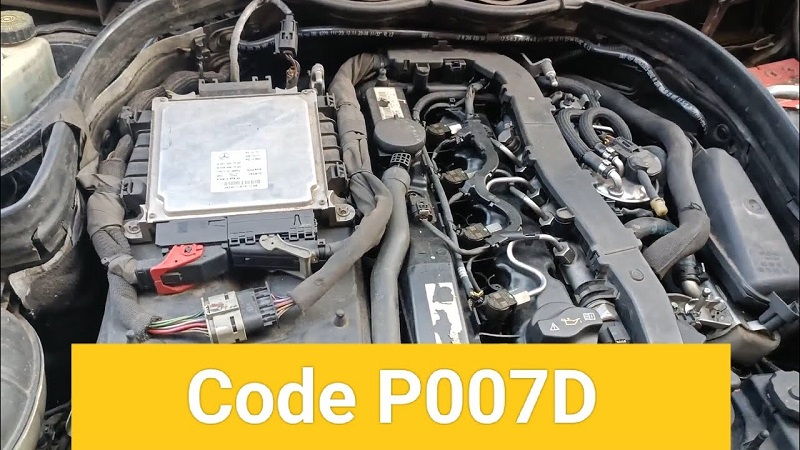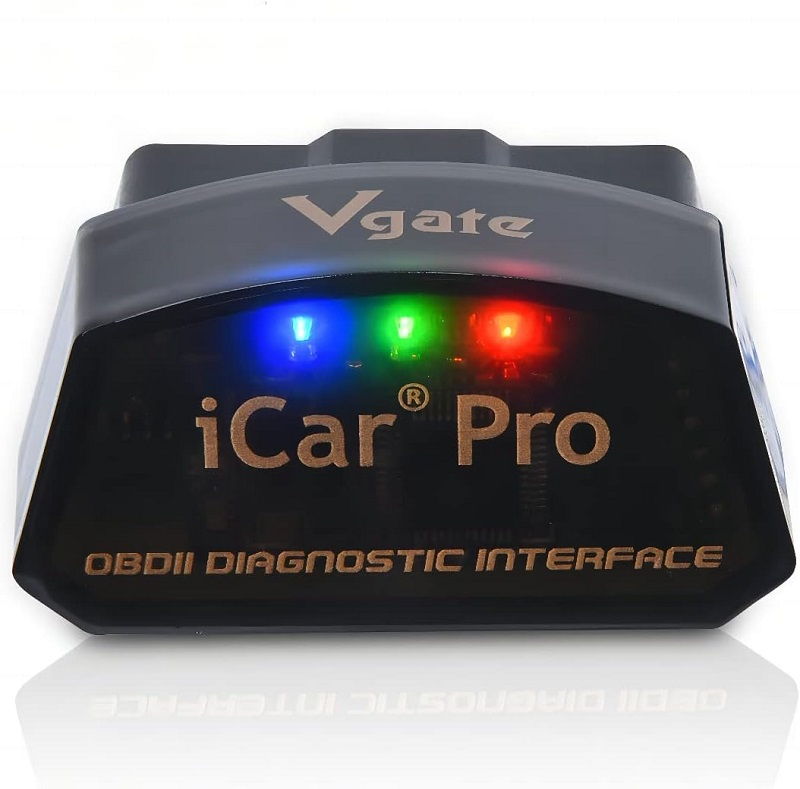This post contains affiliate links. This means I will make a commission at no extra cost to you should you click through and make a purchase [ “As an Amazon Associate, I earn from qualifying purchases.” ]. Read the full disclosure here.
Deciphering P007D Code: Understanding the Charge Air Cooler Temperature Sensor Circuit High Bank 1 GuideMechanic.Com In the intricate world of automotive diagnostics, the illumination of the check engine light often serves as a harbinger of potential issues under the hood.
Among the myriad of diagnostic trouble codes (DTCs) that can trigger this warning, one such code is P007D, specifically concerning the “Charge Air Cooler Temperature Sensor Circuit High Bank 1.”
While the terminology may sound complex, delving into the intricacies of this trouble code is essential for both vehicle owners and technicians to ensure timely and effective repairs.
See Also: P007B Code: Charge Air Cooler Temperature Sensor Circuit Range/Performance Bank 1
P007D Code: Charge Air Cooler Temperature Sensor Circuit High Bank 1
Unveiling P007D

P007D is a generic OBD-II trouble code indicating a problem with the charge air cooler temperature sensor circuit on Bank 1 of the engine.
In modern vehicles equipped with sophisticated engine management systems, these sensors play a crucial role in monitoring the temperature of the charge air entering the engine.
The Engine Control Module (ECM) monitors the performance of these sensors through various circuits. When it detects a high voltage condition or malfunction in the sensor circuit on Bank 1, it triggers the P007D trouble code and illuminates the check engine light.
Understanding the Components Involved
To comprehend the implications of the P007D code, it’s crucial to understand the key components involved:
Charge Air Cooler Temperature Sensor:
This sensor measures the temperature of the charge air as it enters the engine, providing vital data to the ECM for optimal engine performance and efficiency.
Bank 1:
In engines with multiple cylinders, the cylinders are typically divided into banks. Bank 1 refers to the bank of cylinders that includes cylinder 1.
ECM:
The Engine Control Module serves as the brain of the vehicle’s engine management system, receiving input from various sensors and controlling critical functions, including monitoring charge air temperature.
P007D Code: Charge Air Cooler Temperature Sensor Circuit High Bank 1
Common Causes of P007D
Check out this Universal Water Coolant Oil Temp Sensor Temperature 1/8 Npt Electrical Sender Transmission Sensor Unit

Several factors can contribute to the triggering of the P007D trouble code, including:
Faulty Temperature Sensor:
The charge air cooler temperature sensor may be faulty, providing inaccurate temperature readings or failing to transmit data to the ECM.
Wiring Issues:
Damage, corrosion, or breaks in the wiring harness connected to the temperature sensor can disrupt the flow of electrical signals, leading to circuit malfunctions.
Poor Connections:
Loose or corroded electrical connections at the temperature sensor or ECM can impede proper communication and functionality, resulting in high voltage conditions.
Sensor Placement:
Improper placement or mounting of the temperature sensor within the charge air cooler can lead to inaccurate readings and trigger the code.
ECM Malfunction:
In rare cases, a malfunction within the Engine Control Module itself can erroneously trigger the P007D code.
P007D Code: Charge Air Cooler Temperature Sensor Circuit High Bank 1
Symptoms of P007D
Check out this Vgate iCar Pro Bluetooth 4.0 (BLE) OBD2 Fault Code Reader OBDII Code Scanner Car Check Engine Light for iOS/Android

When P007D is present, drivers may experience various symptoms indicating potential issues with the charge air cooler temperature sensor circuit. These symptoms may include:
Check Engine Light:
The illumination of the check engine light serves as the primary indicator of a problem, prompting drivers to seek diagnostic assistance.
Reduced Engine Performance:
Engine performance may suffer, leading to rough idling, hesitation during acceleration, or decreased power output.
Poor Fuel Efficiency:
Inaccurate temperature readings can result in suboptimal engine performance and decreased fuel efficiency.
Excessive Exhaust Emissions:
Higher-than-normal levels of exhaust emissions may be observed due to inefficient combustion caused by inaccurate charge air temperature readings.
P007D Code: Charge Air Cooler Temperature Sensor Circuit High Bank 1
Diagnosing and Resolving P007D
Diagnosing and resolving the P007D code typically requires a systematic approach by a qualified automotive technician. Here’s a general outline of the diagnostic and repair process:
Scan the Vehicle:
Use an OBD-II scanner to retrieve the trouble codes stored in the vehicle’s ECM, including P007D.
Inspect Wiring and Connections:
Thoroughly inspect the wiring harness and connectors associated with the charge air cooler temperature sensor for any signs of damage, corrosion, or loose connections.
Test Sensor Operation:
Test the charge air cooler temperature sensor to ensure it is functioning correctly within specified parameters. This may involve measuring resistance and comparing temperature readings to known values.
Check Sensor Placement:
Verify that the temperature sensor is correctly positioned and mounted within the charge air cooler to ensure accurate temperature readings.
Clear Codes and Test Drive:
After addressing any identified issues, clear the trouble codes from the ECM’s memory and conduct a test drive to verify that the symptoms have been resolved.
Recheck for Codes:
Perform a final scan to confirm that the P007D code has been successfully cleared and that no other codes are present.
Conclusion
The P007D trouble code concerning the charge air cooler temperature sensor circuit high on Bank 1 serves as a critical indicator of potential issues within a vehicle’s engine management system.
While it may initially cause concern for drivers, understanding the underlying causes and symptoms is essential for effective diagnosis and resolution.
Whether through inspecting wiring, testing sensor operation, or verifying sensor placement, addressing the root cause of the issue is crucial for restoring optimal engine performance and reliability.
By working closely with knowledgeable technicians and adhering to proper diagnostic procedures, drivers can navigate the complexities of automotive trouble codes like P007D with confidence and peace of mind.
See Also: P007C Code: Charge Air Cooler Temperature Sensor Circuit Low Bank 1
- P0000 Through P0099: Understanding OBD-II Trouble Codes - February 11, 2025
- P0000 Through P0199: Understanding OBD-II Trouble Codes - February 10, 2025
- P0080 Exhaust Valve Control Solenoid Circuit High (Bank 1) - February 9, 2025
